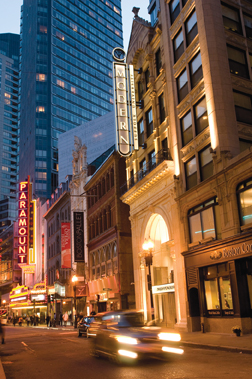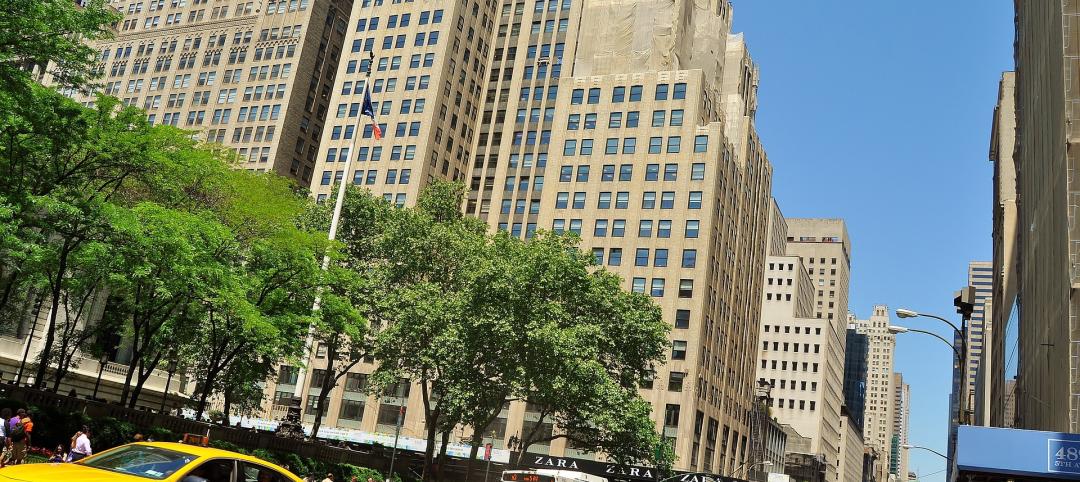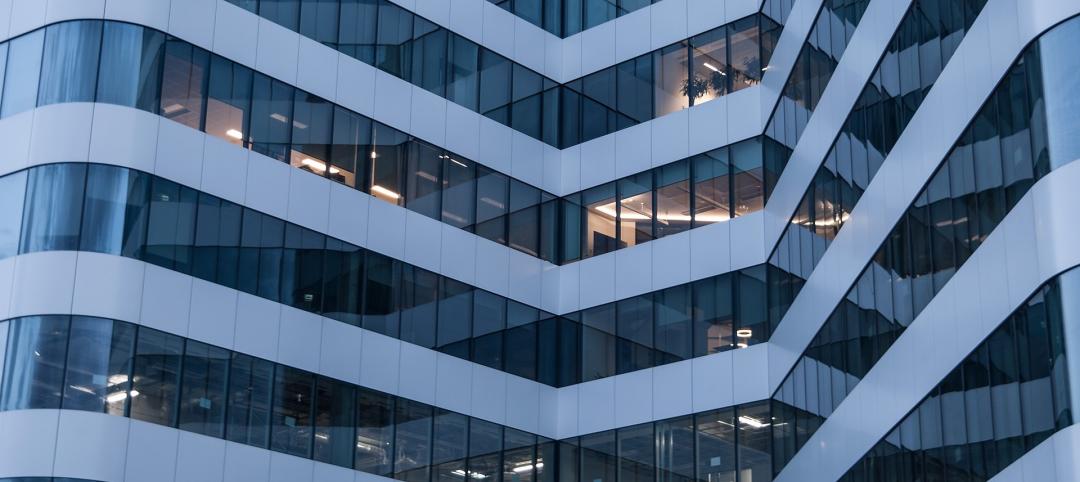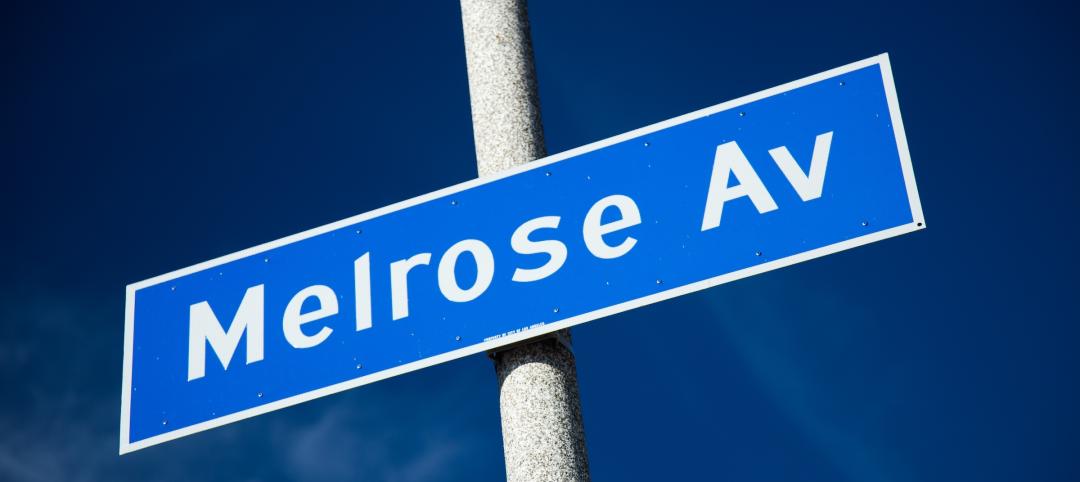In the fall of 2008, Boston’s Modern Theatre looked anything but modern. Listed on the National Register of Historic Places, the landmark structure, located in the city’s Downtown Crossing area, was on the brink of collapse when Suffolk University invested $30 million to reconstruct it.
Suffolk University purchased the building from the city of Boston in 2008 in order to enable it to meet the growing needs of its theater program and provide a new student residence hall, according to Gordon B. King, the university’s senior director of facilities planning and management. “The reuse of the property fit well into Suffolk’s master plan, which called for the addition of new housing for 197 students,” he said.
HISTORICAL THEATER EXPERIENCES BOOM, THEN SUFFERS NEGLECT
Designed in 1876 by architect Levi Newcomb, the building originally housed two cast iron storefronts and a carpet storage warehouse. In 1913, the building underwent its first reconstruction. Architect Clarence Blackall was hired to convert the building into a theater for showing silent motion pictures. Blackall incorporated a marble addition into the main façade and inserted a narrow 800-seat auditorium into the basement and first three stories of the structure.
By the late 1920s, the theater was a trailblazer for “talkie” films. But it didn’t take long before the Modern was struggling to compete with larger, more up-to-date theaters throughout Boston. The owners struggled to fill the seats, but the long, slow decline of the theater was set in motion.
The 1970s saw a brief effort to rehabilitate the theater, but that failed and the structure was sold in the early 1980s. It sat largely untouched, rapidly deteriorating for more than 20 years until Suffolk University acquired it four years ago.
PROJECT SUMMARY
Modern Theatre, Suffolk University, Boston
Building Team
Owner/developer: Suffolk University
Architect: CBT Architects (co-submitter)
MEP engineer: Zade Associates
Structural engineers: McNamara/Salvia and Structures North Consulting Engineers Inc.
General contractor: Suffolk Construction Co. (co-submitter)General Information
Size: 70,000 sf
Construction cost: $30 million
Construction period: November 2008 to October 2010
Delivery method: Design-bid-build
DEVELOPING A TRULY ‘MODERN THEATRE’ FROM THE GROUND UP
When Suffolk University acquired the building, the interior was in such disrepair it was no more than a decaying shell—only the façade could be saved. A few original items were preserved, including a 26-foot-wide painted screen tapestry from the early 1900s Modern Theatre, along with some paneling, wall coverings, and cornices.
“The existing building was in very poor structural condition and was condemned by the city,” says Adam McCarthy, PE, a principal with McNamara/Salvia Inc., Boston. However, the Building Team was committed to designing a new theater that would invoke contemporary standards of comfort and technology, while echoing the form and feeling of the building’s past. In addition, a 10-story residence hall built atop the theater would serve as Suffolk University’s newest dormitory.
STRUCTURAL PROBLEMS BETWEEN RESIDENCE HALL AND FAÇADE
Because the original auditorium was very deep but extremely narrow, reconstruction of the Modern Theatre posed difficult structural design problems.
“We had many challenges with reincorporating the historic façade back in the project, with a major one being how the building movements from the new residential building could be accommodated by or isolated from the historic façade,” says McCarthy. “This led to a great deal of structural modeling and detailing to achieve the acquired goals.”
The narrow building design would make the tall, thin residential hall portion of the structure act like a sail in the wind. The structural engineers had to deal with the complexities associated with the softening of the transfer members created in the lateral force resisting system.
Transfer members carry the load from the residential floors above and spread it over the top of the performance space. With a mostly moment-frame reinforced steel structure, the tower deflects significantly more than the historic stone and masonry façade is able to accommodate.
“This required a carefully detailed and exactingly constructed set of slotted structural connections and expansion joints, as the stone façade still relies on the tower for lateral bracing in its weak axis,” says Adrian LeBuffe, senior associate and project architect with CBT Architects, Boston.
The Building Team next turned their attention to ensuring the original façade would fit seamlessly on the new structure.
Prior to tearing down the original structure, the Building Team spent two months studying, planning, and preparing for the removal of the façade and the restoration process.
As the Building Team deconstructed the white Vermont marble and sandstone exterior, each piece was individually cleaned and catalogued prior to reassembly. Total laser scanning was utilized to obtain exact profiles of each stone, and BIM was used to load the data into a 3D model. This enabled the Building Team to identify dimensional problems with the façade and eliminate conflicts due to the redesign of the new structure, including the façade’s interaction with structural steel. This allowed for the arrangement of special off-site fabrication to avoid any conflicts. As a result, masons were able to install the façade smoothly and efficiently.
“Despite the difficulty of façade deconstruction on a very tight site, a variety of difficult stone restoration issues, and the demands of façade reconstruction to modern code and programmatic requirements, the project went quite smoothly,” says LeBuffe.
The reconstruction of the Modern Theatre resulted in a unique venue in Boston. The Building Team revived a city landmark and included design elements that modernized the distinctive features of the original 1900s theater while preserving the building’s historic façade.
“The city’s vision for restoration and historic preservation in the Lower Washington Street area and [the Building Team’s] vision for this project were one and the same,” said King. “The restoration of the Modern Theatre—one of the area’s three landmark theatres, along with surrounding residential and commercial buildings, has brought beauty, vibrancy, and economic vitality back to the neighborhood.” +
Related Stories
Cultural Facilities | Aug 21, 2024
Baltimore’s National Aquarium opens 10,000-sf floating wetland that mimics the harbor’s original tidal marsh habitat
The National Aquarium in Baltimore has opened the National Aquarium Harbor Wetland, a 10,000-sf floating wetland that mimics the Inner Harbor’s original Chesapeake Bay tidal marsh habitat. Located between Piers 3 and 4 on Baltimore’s Inner Harbor, the $14 million project features more than 32,000 native shrubs and marsh grasses.
Mixed-Use | Aug 21, 2024
Adaptive reuse of a Sears store becomes luxury mixed-use housing
6 Corners Lofts at 4714 W Irving Park Road, Chicago, Ill., opened in March of 2024 as a 394,000-sf adaptive reuse project born out of a former Sears store.
Building Materials | Aug 19, 2024
Federal 'buy clean' construction materials label program unveiled
The U.S. Environmental Protection Agency announced a plan for implementing a new label program to boost American production of more climate-friendly construction materials and products. The label program will prioritize steel, glass, asphalt and concrete.
Museums | Aug 19, 2024
The Tampa Museum of Art will soon undergo a $110 million expansion
In Tampa, Fla., the Tampa Museum of Art will soon undergo a 77,904-sf Centennial Expansion project. The museum plans to reach its $110 million fundraising goal by late 2024 or early 2025 and then break ground. Designed by Weiss/Manfredi, and with construction manager The Beck Group, the expansion will redefine the museum’s surrounding site.
AEC Tech | Aug 19, 2024
Harnessing AI to revolutionize architectural design and creativity
Architects are wondering if AI will replace us. For Vessel, the gains offset the fear. We believe there is wisdom in the unattributed quote, “You won’t lose your job to AI. You will lose your job to someone using AI.”
Reconstruction & Renovation | Aug 19, 2024
Movement to protect historic buildings raises sharp criticism
While the movement to preserve historic buildings has widespread support, it also has some sharp critics with well-funded opposition groups springing up in recent years. Some opponents are linked to the Stand Together Foundation, founded and bankrolled by the Koch family’s conservative philanthropic organization, according to a column in Governing magazine.
Government Buildings | Aug 19, 2024
GSA posts new RFI for enabling energy efficiency, decarbonization in commercial buildings
The U.S. General Services Administration (GSA), in collaboration with the U.S. Department of Energy, recently released a new Request For Information (RFI) focused on enabling energy efficiency and decarbonization in commercial buildings. GSA wants to test innovative technologies through GSA’s Center for Emerging Building Technologies.
MFPRO+ New Projects | Aug 16, 2024
At 60 stories, the Paramount multifamily development will stand as Nashville’s tallest high rise
When complete, the 60-story Paramount building, at 750 feet high, will be the tallest high rise tower in Nashville, Tenn., surpassing the city’s current record holder, the 617-foot AT&T Building. The $390 million Paramount project recently launched condo sales after securing more than $230 million in construction financing.
Urban Planning | Aug 15, 2024
New York City begins first large-scale porous pavement installation
New York City is installing its first large-scale porous pavement installation along seven miles of roadway in Brooklyn. The project will keep 35 million gallons of stormwater out of the combined sewer system each year, according to a news release.
Urban Planning | Aug 15, 2024
The magic of L.A.’s Melrose Mile
Great streets are generally not initially curated or willed into being. Rather, they emerge organically from unintentional synergies of commercial, business, cultural and economic drivers. L.A.’s Melrose Avenue is a prime example.

















